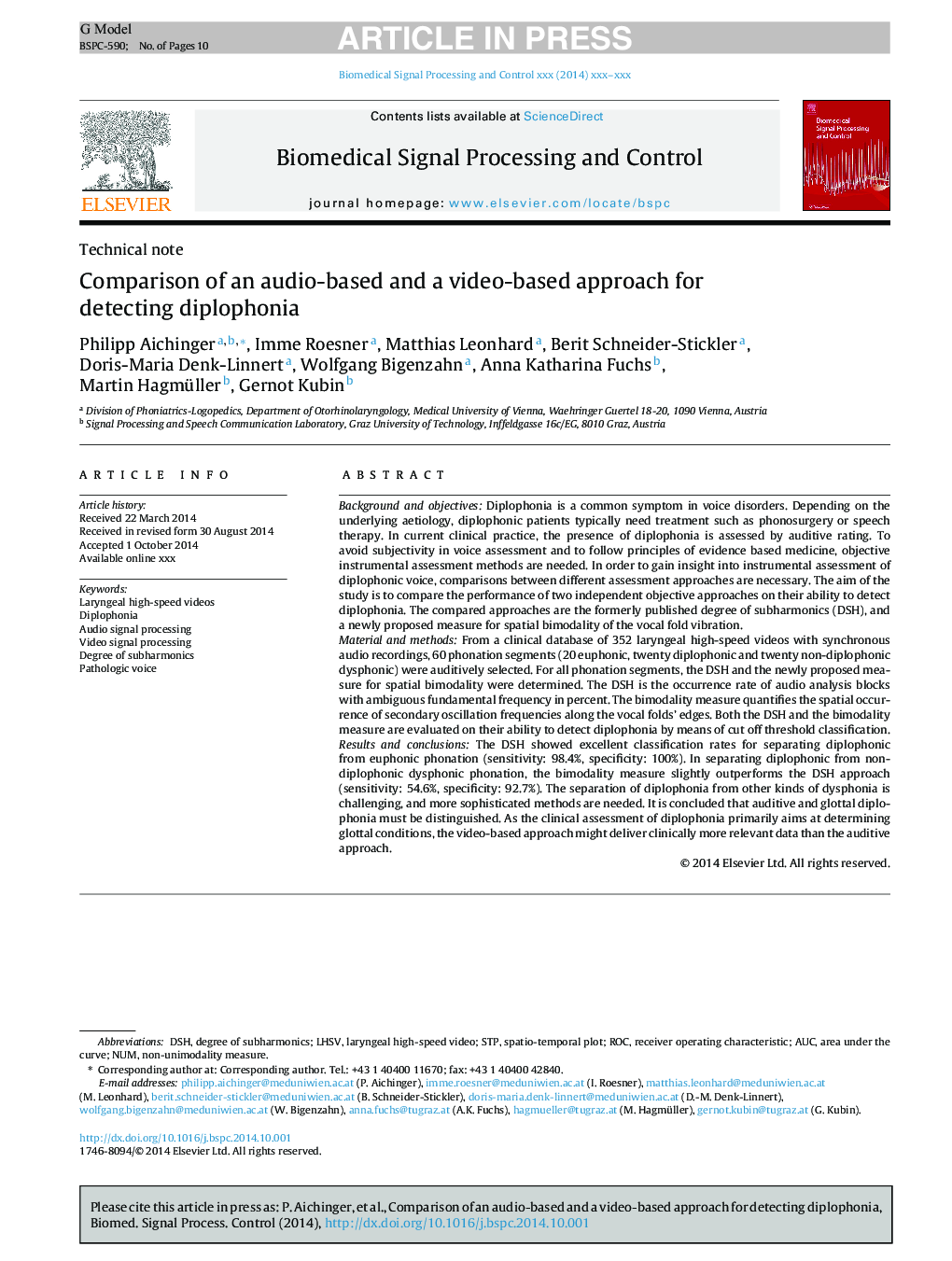| Article ID | Journal | Published Year | Pages | File Type |
|---|---|---|---|---|
| 6951166 | Biomedical Signal Processing and Control | 2017 | 10 Pages |
Abstract
The DSH showed excellent classification rates for separating diplophonic from euphonic phonation (sensitivity: 98.4%, specificity: 100%). In separating diplophonic from non-diplophonic dysphonic phonation, the bimodality measure slightly outperforms the DSH approach (sensitivity: 54.6%, specificity: 92.7%). The separation of diplophonia from other kinds of dysphonia is challenging, and more sophisticated methods are needed. It is concluded that auditive and glottal diplophonia must be distinguished. As the clinical assessment of diplophonia primarily aims at determining glottal conditions, the video-based approach might deliver clinically more relevant data than the auditive approach.
Keywords
Related Topics
Physical Sciences and Engineering
Computer Science
Signal Processing
Authors
Philipp Aichinger, Imme Roesner, Matthias Leonhard, Berit Schneider-Stickler, Doris-Maria Denk-Linnert, Wolfgang Bigenzahn, Anna Katharina Fuchs, Martin Hagmüller, Gernot Kubin,
